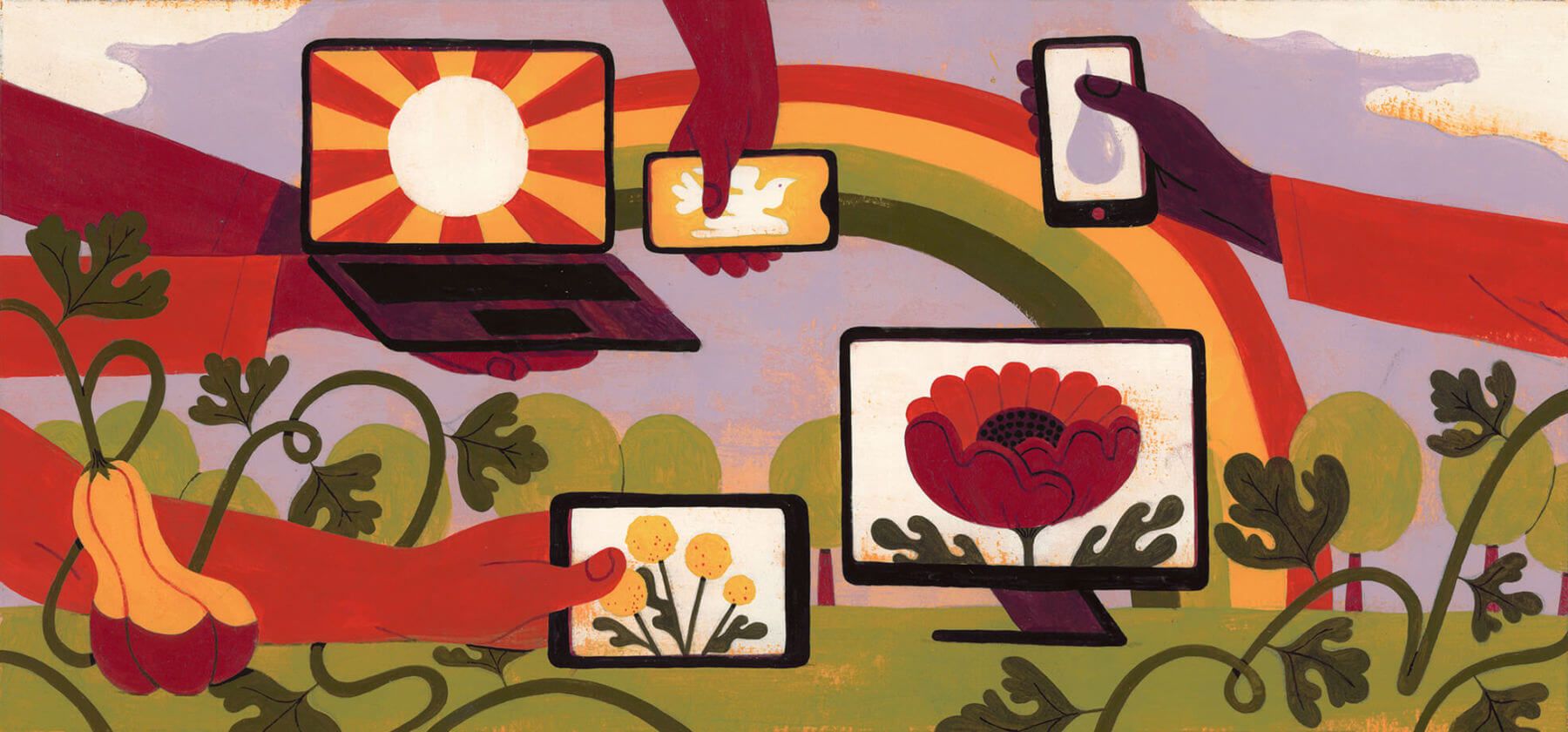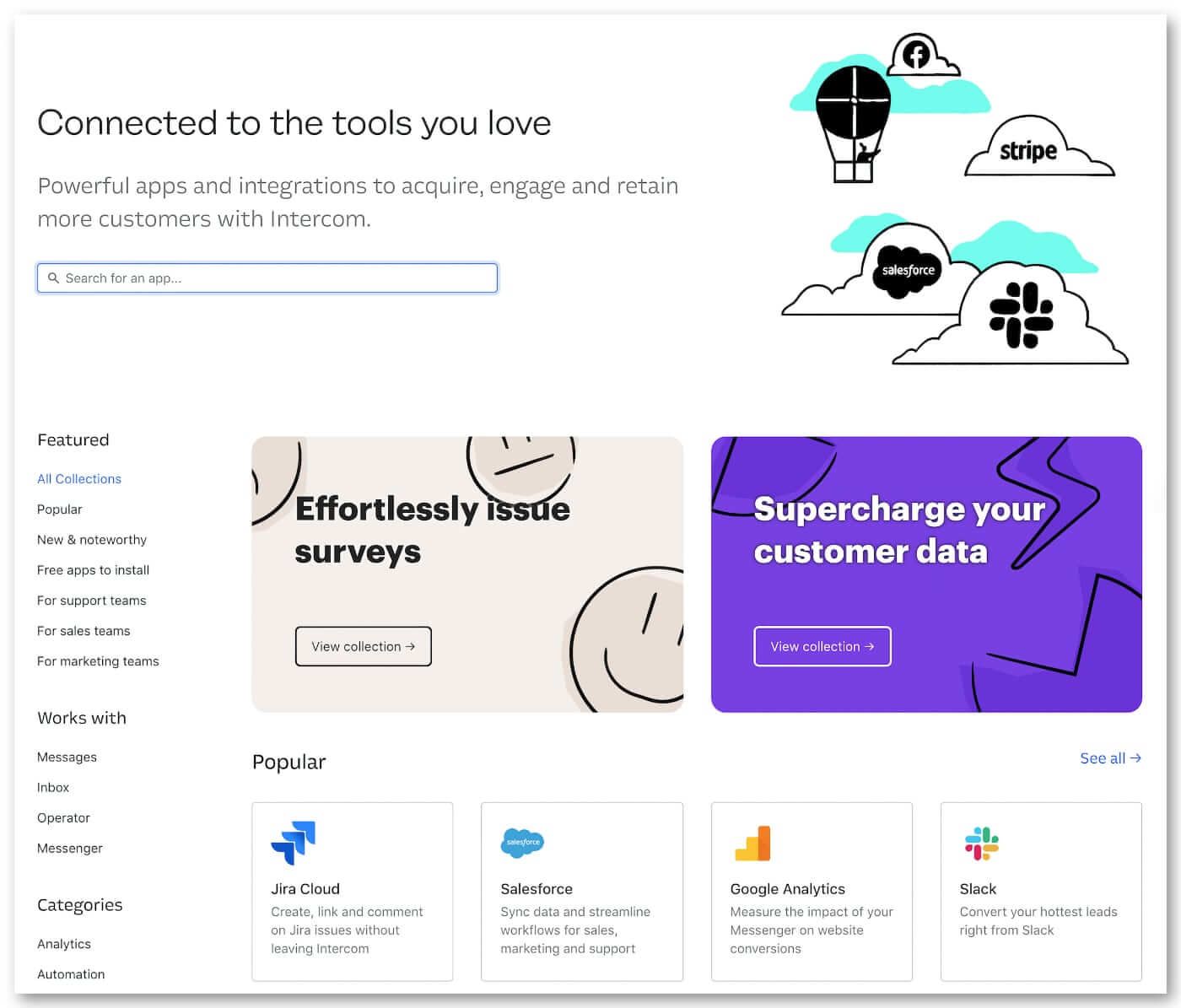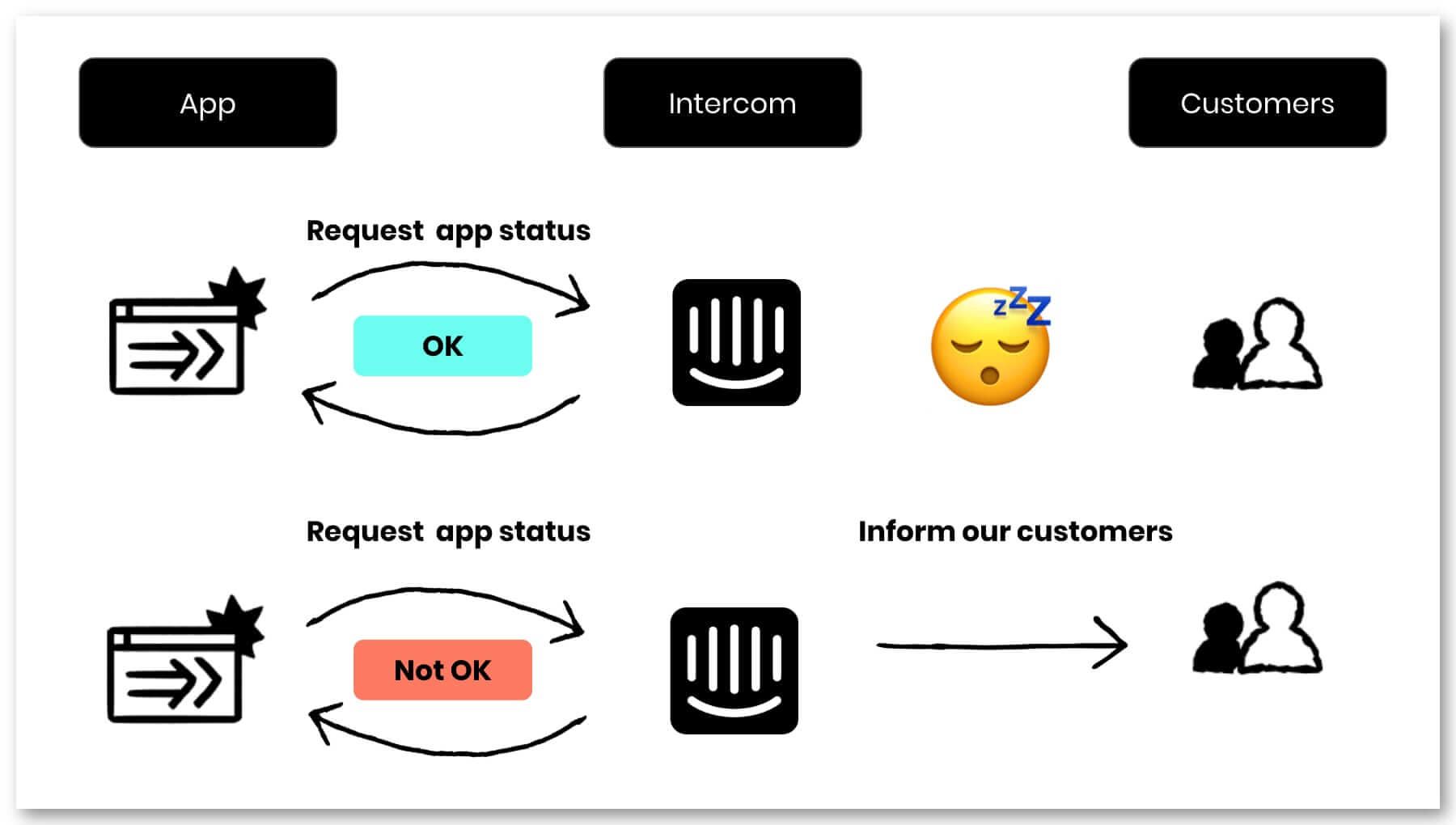
Cultivating a robust app ecosystem
Main illustration: Celia Jacobs
Building an app ecosystem is a big challenge, as we all know, but what does the long, hard work of maintaining that ecosystem look like?
For the past year, we’ve been focused on cultivating a robust, enduring ecosystem of apps for the Intercom App Store. One of the problems we’ve been trying to address is the case of apps that break break or become non-functioning. We were trying to find a single, overarching solution to the problem.
Luckily, we had a breakthrough last year when Enzo visited a gorgeous abbey in Connemara in the west of Ireland. As he tells it:
While visiting I took a walk in the lovely Victorian garden that belongs to the abbey, and I noticed a gardener with his truck full of tools. The gardener was moving from one plot of the garden to another, swapping between tools to clean or structure things on the plots.
The amount of care he put into these plants was catching, and the structure of the Victorian garden was slowly revealed to me: vegetables, fruits, and citrus fruits on one side, spices on another, flowers and bushes to join the two sides. Even a small stream of natural water that needed to be taken care of. That’s about the moment I began asking myself a number of questions about gardens… and app ecosystems.
“How did they keep such ‘high quality and usability’ for a garden more than a hundred years old?”
To understand why, you have to appreciate that the abbey is shut away from any large city. Watching this gardener carefully tending this garden, it made me wonder, how did they keep such ‘high quality and usability’ for a garden more than a hundred years old, where carrying any equipment is expensive, and the climate of Connemara is complex?
Has the garden kept an unchanged structure and the same variety of plants throughout the years? How easy is it to keep such high quality plants, and how do they improve the garden over time? So when the gardener ended up next to me I couldn’t help but ask:
“Excuse me, I have a question about the garden if that’s alright with you?”
“Sure, what’s on your mind?” said the gardener.
“How did you keep the garden so vivid after all these years?”
“We had to provide, adapt, and evolve unique treatments for every single plant. You really can’t apply the same things over time as plants grow and climate varies every year.”
“Seriously? How do you do that?”
“We assess the plants’ health every week. We then note down their status and adapt their treatment week over week if needed. It’s a ton of work.”
It sounded like a rather simple insight, but it helped us forge a breakthrough in how we tackled the issue of app health in our own ecosystem. This perfect garden has been delighting visitors for so many years, yet so many of those visitors completely underestimate the manual gardening work behind it. To anyone that doesn’t understand the system (gardening), maintaining the plant “ecosystem” sounds simple. In reality, it requires significant time and effort and a constantly evolving process to maintain the high quality of the garden.
“Just as plants can get sick or start dying, apps can break down”
Our realization was that just as plants can get sick or start dying, apps can break down, and a large part of the work of cultivating the ecosystem needs to be diagnosing problems as soon as possible. It’s our responsibility to tend our ecosystem and ensure the high quality and usability of it. This was our journey.
Intercom’s app ecosystem
Our partners build great apps that allow our customers to integrate Intercom with their existing tech stacks. This delivers significant value to our customers, including helping them save precious time. Today there are more than 200 apps available in our App Store.

Intercom’s garden: its App Store 🏡
These apps work in various ways. They can integrate with Intercom’s data or more embedded UI components – for instance, within our core products: Inbox, Messenger, and Bots. All together they form an app ecosystem.
The problem about app ecosystems that no one talks about
Often, within an app ecosystem, there are a number of apps that are not working correctly. This creates ongoing issues for the customers who use them. We describe these apps as being in “unhealthy” states. To explore the problem further, we identified and quantified the three main unhealthy states:
- The token for an app has expired or was revoked. We cannot communicate with the third party anymore.
- The settings of the third party have changed and the app can’t reliably guess the choices made there.
- A third party launched an update which requires new permissions.
We noticed all these problems had one thing in common: a customer needs to take action to fix the situation.
What’s more? These problems are fairly common – they happen as other platforms evolve their product and will keep happening. For instance, whenever Facebook updates their security permissions, millions of partners around the world may be impacted.
While we cannot prevent these problems from happening, we can fix them intelligently.
Designing an app check system
We started to investigate powerful yet simple ways to solve this problem and settled on three product principles:
- Build a cohesive end-to-end experience that’s not only informative but also actionable.
- We did not want to rethink the experience, but rather improve our current flows where customers and partners already interact with apps.
- Start small, potentially at a specific app level.
To that end, we crafted a system that requests the app’s status for every workspace they’re currently being used in.
The app verifies that everything works correctly and responds indicating if the installation is functioning or not, together with an informative message.

Creating an engaging experience
Next, we identified four principles to deliver against these product principles:
- Simplify complexity: It’s very hard – if not impossible – to predict all of the ways in which apps can become non-functioning. Our system should be flexible enough to absorb and translate this complexity into a two-click solution.
- Provide meaningful context: We needed our apps to explain precisely what was going on.
- Provide clear action: Our solution had to guide users with simple steps.
- Feel safe: Apps require access to sensitive information, so we wanted to mitigate any risk in this regard.
When an app is broken or non-functioning, we inform the right admins by email about the problem they face with their app.

Our customers are then brought to the specific app listing where:
- We display specific details about what’s breaking.
- We recommend direct steps to fix the problem.
It takes our customers two clicks to be informed about and fix potential issues with their apps.

We discovered in practice that the notifications we sent to users with apps in “unhealthy states” are 2.5x more effective at generating active users than efforts to acquire entirely new app users.
Travel around and discover your garden
Tending individual plants rather than thinking that all the plants can survive in the same way was the best approach for us. It aligned with our platform mission to help our customers and partners be successful with integrations. And finally, we recommend traveling around and discovering your own metaphorical garden – who knows where inspiration may spring from.









